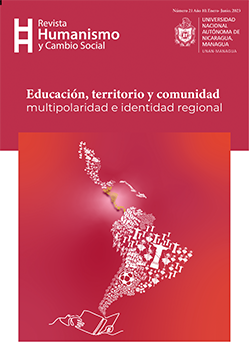Estudio comparativo de los años de escolaridad en Nicaragua, 2009 y 2014
Palabras clave:
Escolaridad, nivel de vida, pobreza, encuesta, sociedadResumen
Este estudio tiene como objetivo central estimar los años de escolaridad en la población nicaragüense entre el periodo 2009 y 2014, bajo un enfoque comparado. El alcance de la investigación es asociativo, donde se han utilizado datos abiertos provenientes de dos Encuestas de Medición de Nivel de Vida (EMNV) 2009 y 2014. El muestreo se realizó en dos etapas, en el caso de ambas encuestas, las inferencias se realizaron utilizando una muestra de 7,520 viviendas, aplicando dos formularios, el de precio y el de hogares. Las variables sobre las que se construyó el indicador fueron: nivel de estudio (S4P12A) y grado o año aprobado (S4P12B). Los resultados demostraron que la población nicaragüense, en su mayoría, es joven y se concentra en la macro región de Managua, con un alto porcentaje de mujeres. De la misma forma, se comprobó una mayor concentración de personas entre los 6, 11 y 16 años de escolaridad (primaria, secundaria y universidad, respectivamente). Para el año 2014, en comparación con la EMNV-2009, se observó un mayor promedio en los años de escolaridad en la macro región de Managua. Se determinó que existe una dependencia de los años de escolaridad y la incidencia de la pobreza, lo que evidencia que la pobreza se reduce cuando una persona termina la educación secundaria.
Descargas
Citas
R Core Team (2022). A Language and Environment for Statistical Computing, R Foundation for Statistical Computing [Archivo de datos]. https://www.R-project.org/
RStudio Team (2022). RStudio: Integrated Development for R. RStudio, PBC, Boston, MA
Robles Soto, A. (2000). Sistema de indicadores para el seguimiento y la evaluación de las metas del programa de acción de la Conferencia Internacional sobre la Población y el Desarrollo para los Países de América Latina y el Caribe. Cepal, repositorio digital.
Saad P., Miller T., Martínez C. y Holz M. (2012). Juventud y Bono Demográfi co en Iberoamérica (2ª ed.). Comisión Económica Para América Latina y El Caribe. https://repositorio.cepal.org/bitstream/handle/11362/1495/S2012103_es.pdf
Sistema de Información de Tendencias Educativas en América Latina. (2019). Perfi l de País Nicaragua 2019. https://shorturl.at/iwKMQ
UNESCO (2010). Datos mundiales de educación. Nicaragua 2010. https://www.ibe.unesco.org/fileadmin/user_upload/Publications/WDE/2010/pdfversions/ Nicaragua.pdf
Wickham H. (2016). Elegant Graphics for Data Analysis. (3a ed.). Springer-Verlag. https://ggplot2.tidyverse.org/
Descargas
Publicado
Cómo citar
Número
Sección
Licencia
Derechos de autor 2023 Universidad Nacional Autónoma de Nicaragua, UNAN-Managua

Esta obra está bajo una licencia internacional Creative Commons Atribución-NoComercial-CompartirIgual 4.0.

